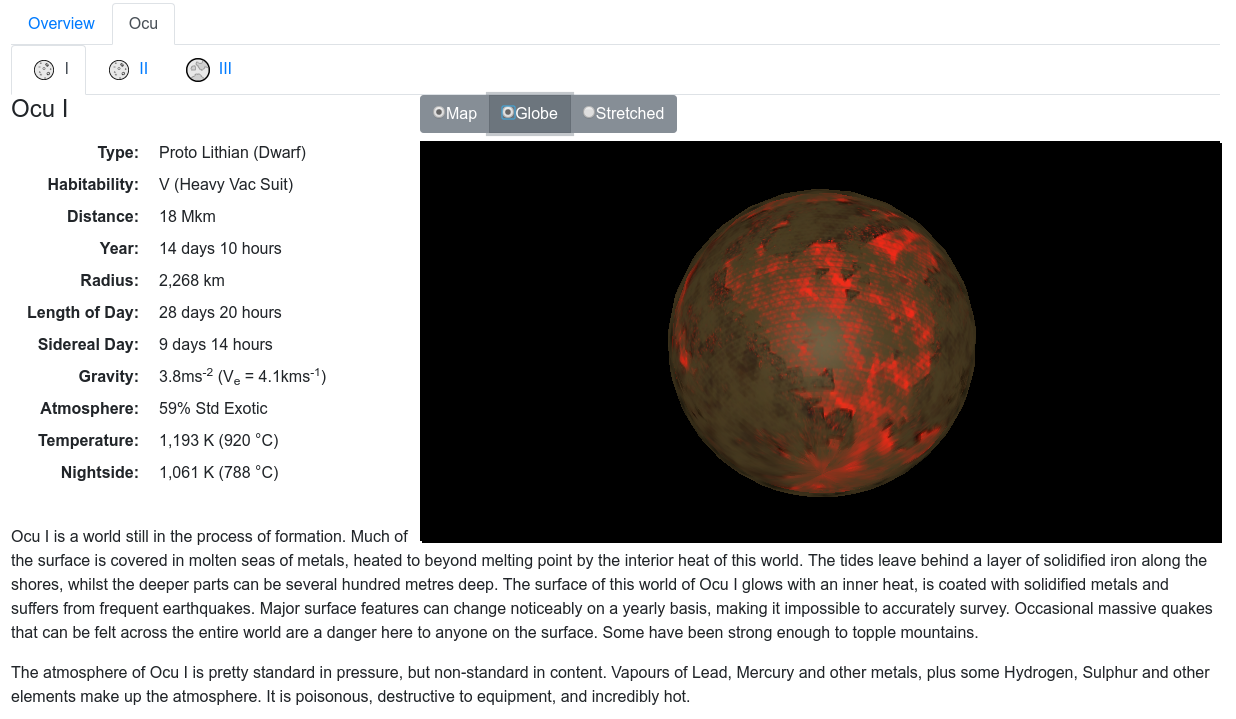WorldGen
WorldGen is a world creation tool designed to generate a living universe of stars and planets for use in a Science Fiction RPG similar to Traveller. When it was originally written over fifteen years ago, it was designed to directly read UWP data and simply expand it to include multiple planets per star system. The latest version is currently focused on building systems from scratch, with no concerns as to the UWP. However, the style and flavour will be similar to the Imperium, though not identical.
The code is open source, and available on GitLab. There is now a Docker container available for it. For details, see the blog.
Specifically, as the example below shows, the amount of information generated for a world is considerably more than can be encoded in a UWP.

Each world has its own unique surface map, physical characteristics and text description. These are procedurally generated according to the type of the world. World types follow a detailed classification scheme, to allow for a wide variety of world types.
The current version, code named Baryonic Blast, is focused on getting the basics of civilisations completed. So far, some basic civilisation types have been written, for small outposts.
The aim is create a living universe, so it's goal is to track the movement of individual ships, trade goods and information across a universe of millions of worlds. As such, all world generation is optimised for quantity and diversity rather than a handful of perfectly detailed worlds.
Layers of Detail
Sectors
At the largest scale, the galaxy is split into Sectors, each of which is 32 parsecs wide and 40 parsecs tall. Sectors are numbered from a central location, spiralling out in a clockwise fashion. The galaxy is two dimensional for reasons of simplicity.
Star Systems
A star system normally consists of one or more stars plus a system of planets. It is possible for a system to consist only of a single rogue planet, or several stars with dozens of planets, moons and asteroid belts.
Since the orbits of every star, planet and moon will be known, it is possible to show a map of where everything is in the system for any given time (currently, simple two-body circular orbits are assumed).
Planets
Planets make up the bulk of the data. They are classified according to the Planetary Classification List, which determines the broad characteristics of the planet.

